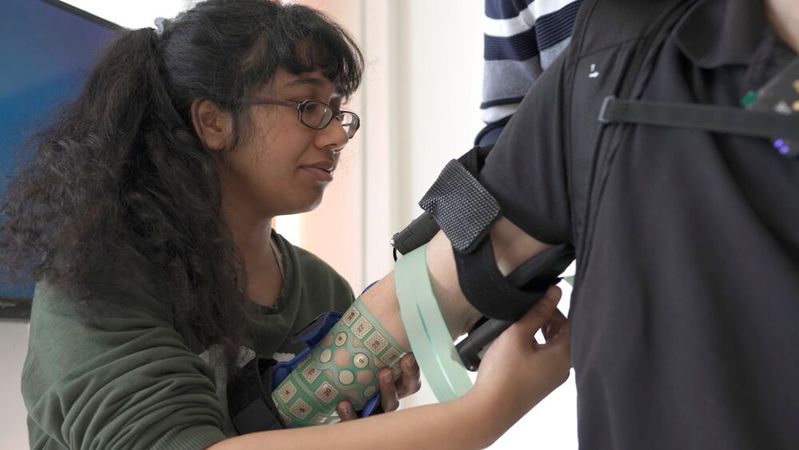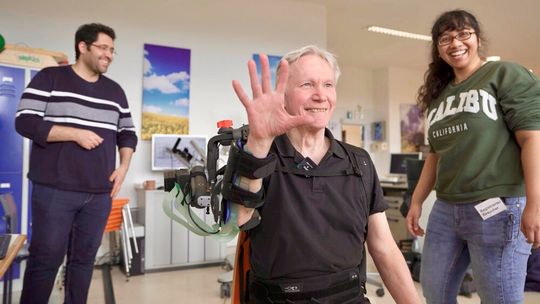Researchers have developed a system that allows patients to relearn how to move arms and hands affected by paralysis shortly after a stroke. Targeted muscle stimulation in the forearm, an exoskeleton, and the digital twin make it possible.

Researchers at the Technical University of Munich (TUM) specifically stimulate muscles in the forearm through so-called functional electrical stimulation (FES). This is necessary for moving fingers, grasping objects, or catching balls. Since in the case of hemiplegia after a stroke, not only the hand but the entire side of the body is usually affected, a framework additionally supports the entire arm up to the shoulder.

24 stroke patients have already used the overall system of an exoskeleton for arm and shoulder in combination with FES as part of the ReHyb research project – half of them at the Schön Klinik Bad Aibling Harthausen, which had taken over the study leadership.
Modular system with computer game: independent training
To train the grasping and movement of the arm very soon after a stroke, the researchers also use a computer game that automatically adjusts in difficulty to the abilities of the users: On a screen, balls of different colors and speeds fly towards the patients. The task is to catch the balls and assign them to the corresponding differently colored compartments.
The secret to success: Digital twin and exoskeleton
At the center of the development by TUM Professor Sandra Hirche is a digital twin that captures the individual conditions of each patient and integrates them into a control loop. Among other things, the researchers need to determine how well each patient can move their arm and hand. After a stroke, paralysis can occur due to damage to the motor area in the brain responsible for movement. However, it is unpredictable how much the signals transmitted from the brain to the forearm muscles will be affected post-stroke. "Individual muscle strands in the forearm musculature can be stimulated in the right way to move the hand and fingers," says the researcher from the Chair of Information-Oriented Control.
In addition, the researchers need to know how strongly the muscles should be stimulated and how much the exoskeleton should assist. "With the help of algorithms, we combine this individual information into a control loop," says control engineering expert Hirche. This digital twin is therefore necessary to individually support the movement of the arm and hand in affected individuals.
What belongs to the system's digital twin
-
Capture muscle activity: The musculoskeletal system, motor control, and muscle nerve system are each affected to varying degrees by a stroke. By measuring the electrical voltage in the muscle, it is possible to determine how severely the nerves responsible for sending signals from the brain to the muscles, and ultimately for the movement of the fingers and hands, are impaired.
-
Stimulating forearm muscles: For functional electrical stimulation (FES), a film with 32 electrodes is applied to the forearm of the affected individuals. Depending on which electrodes are activated, individual fingers move, the hand extends or contracts. The threshold at which fingers and hand move is individually adjustable.
-
Support with an exoskeleton: An exoskeleton, through mechanisms like a spring mechanism or specific motors, helps affected individuals move and rotate their arms or shoulders more easily. This support is necessary as the arm muscles have already been weakened by the condition. Additionally, it would be difficult to place electrodes on the shoulder in a way that targets the correct muscles. The exoskeleton assists patients in relearning how to coordinate movements of the hand, arm, and shoulder together.











-1.png)


